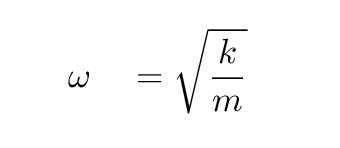|
estebanana -> RE: vertical string pull on the soundboard (torque) (Sep. 1 2020 5:52:10)
|
quote:
Well, I’ve gotta hand it to you, you delicate little flower, you sure can talk-the-talk. Upthread, you did a verrrry impressive job of sounding like you were quoting chapter and verse from Gore, but everything I’ve seen about his book (Volume 1 of 2) includes lots of that spooky, scary, out-of-place engineering-physics-math stuff (sorry about having to use those awful trigger terms…you’ll get over it, big guy!). Here is a direct quote describing Gore’s book, from Gore’s own website:
https://goreguitars.com.au/main/page_the_book_background.html
Yes, there’s a lot of physics, engineering and mathematics in there, because I felt that was required to prove my points. Otherwise this would have been yet another book full of unscientific, unsubstantiated opinion about how guitars work and, frankly, I’ve seen too many of those. If physics, engineering and mathematics aren’t your strong suits, don’t worry! The points I make are still there, are explained qualitatively, and the concepts are still usable. However, there’s no avoiding the mathematics if you want to get quantitative. As one of my old friends in academia said, “if it was easy, someone would have written your book years ago”.
I don’t know if you post on the Australian/New Zealand Luthiers Forum, but if you don’t, maybe you’d better head over there, pronto pronto!, and straighten out those poor mathy-math-mathenstein folks (the horror – they’re actually discussing things with Trevor Gore, trying to implement and understand his work…getting quantitative!):
http://www.anzlf.com/viewtopic.php?f=33&t=4636&hilit=gore+book
Did you reeeeally purchase Gore’s books, and if so, how’re they doing, filling up that space in your closet? Your being so scared of it actually has me considering joining Stewmac for getting their half-price offer on the two volumes…maybe you’re an advertising ringer? Hmmmmmm…
You haven't been around here for long and I took a really long break from posting here, but you'll see if you stick around there are a lot of really knowledge people who get flamenco guitar making inside out. This stuff can't all be transmitted by a cerebral understanding of math or engineering. Even Trevor know's that. His books are predicated on the idea that you can reproduce a quality of sound by studying the physics, but it's not how flamenco guitars were created or how they matured and arrived at a apogee of development.
The whole city of Granada created a guitar making tradition and industry without electric gadgets to test guitars, for example, the arte was already mastered and transmitted, some books about physics helps us to understand the why, but not the soul.
If I wanted to talk to Trevor I'd just email him. And his work is important, but he's got respect for people who don't use it if they are good.
Here's the thing, if one s struggling with basics like worrying about top stiffness, you have to take a chance and plane the top at some point, what Trevor is saying is that 'the book' can be used to understand how to reproduce results once you get an idea of what you want. And the other main function is to give some information so you can teach yourself to diagnose glitches and fine tune the way the modes work together by using a tone generator. Other than that Part 2 if his books deals with Classical and Steel string construction, but conceptualized to take advantage of the physics ideas he lays out.
But we're making flamenco guitars here and that was figured out by the time Barbero died. Gores books are good to explain some physics behind the traditional designs, but too many legendary guitars have been made with these designs by making small changes and building them over and over. I sense a fragility in that some people are not willing to risk.
You're going to fail while you learn this stuff just like Bernabe made guitar that Richard said emphasized too much A. But when Bernabe followed his own recipe he made some of the best flamencos ever. And carved the most beautiful heels.
|
|
|
|

